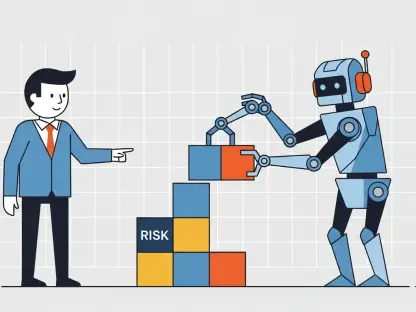I’m thrilled to sit down with Simon Glairy, a renowned expert in insurance and Insurtech, whose deep knowledge of risk management and AI-driven risk assessment has made him a leading voice in the industry. Today, we’ll dive into the transformative potential of AI in insurance, exploring how innovative initiatives are reshaping business models, the power of collaboration between industry and academia, and the future of responsible AI deployment. Our conversation will touch on ambitious goals, groundbreaking technologies, and the ethical considerations that come with such rapid advancements.
How did the idea of integrating AI so deeply into the insurance sector come about for major players like Zurich Insurance Group?
The push for AI in insurance really stems from a need to address long-standing inefficiencies and evolving customer expectations. For a company like Zurich, the inspiration likely came from recognizing that traditional models weren’t keeping pace with the digital era. AI offers a way to process vast amounts of data quickly, improve risk assessment accuracy, and personalize customer experiences. It’s about staying competitive in a landscape where speed and precision are paramount, while also tackling challenges like claims processing delays and outdated underwriting practices.
What are some of the core objectives behind launching a dedicated AI research hub in the insurance industry?
The primary goal is to revolutionize how insurance operates at its core. This means leveraging AI to enhance everything from predictive analytics to customer engagement, ultimately creating more tailored and efficient services. It’s also about reimagining the business model itself—moving from reactive to proactive solutions, like preventing risks before they occur. For an initiative like this, the focus is often on scalability and impact, ensuring that innovations can be rolled out globally while maintaining a customer-centric approach.
Can you walk us through how partnerships between insurance companies and academic institutions contribute to innovation in this space?
These collaborations are a game-changer because they combine practical industry know-how with cutting-edge research. Universities bring fresh perspectives and technical expertise, often through students and professors who are exploring uncharted territory in AI. Meanwhile, insurance companies provide real-world problems and data to test theories against. On a day-to-day basis, you might see joint teams working on prototypes, sharing insights in workshops, and aligning research with business needs, ensuring that solutions aren’t just theoretical but actionable.
The term ‘moonshot factory’ has been used to describe ambitious AI projects in insurance. What does that phrase mean to you in this context?
To me, ‘moonshot factory’ signifies a place where bold, almost audacious ideas are pursued—projects that could fundamentally change the game. In insurance, that might mean developing AI systems that predict risks with unprecedented accuracy or completely rethink how policies are structured. It’s about aiming for breakthroughs that seem out of reach, fostering an environment where failure is part of the learning process, and prioritizing long-term transformation over quick wins.
In what ways do you see AI reshaping the insurance industry over the next few years?
AI is poised to transform nearly every aspect of insurance, from underwriting to customer service. We’re already seeing it streamline claims processing by automating routine tasks and flagging anomalies. Looking ahead, I expect AI to deepen its impact on risk assessment through more sophisticated models that analyze diverse data sources in real time. Customer interactions will also become more personalized, with chatbots and virtual assistants handling complex queries. The biggest shift, though, might be in prevention—using AI to anticipate and mitigate risks before they materialize.
There’s talk about AI radically transforming the business model of insurance. Can you elaborate on what specific changes might be on the horizon?
Absolutely. The traditional insurance model is often built on reacting to events—paying out claims after something happens. AI could shift this to a prevention-first mindset, where insurers use predictive tools to help customers avoid losses altogether. This might mean new pricing structures based on real-time behavior data or offering value-added services like risk advisory. It challenges the core of how insurers generate revenue and interact with clients, pushing toward a more integrated, service-oriented approach.
The concept of ‘agentic AI’ is gaining attention. Can you break down what that means for someone who’s new to the term?
Sure, agentic AI refers to systems that don’t just follow instructions but can act autonomously to achieve goals. Think of it as AI with a sense of initiative—it can make decisions, adapt to new situations, and even collaborate with other systems or humans. In insurance, this could mean an AI agent negotiating claims settlements or proactively adjusting policies based on emerging risks. It’s different from traditional AI because it’s not just processing data; it’s acting on it in a dynamic, almost human-like way.
What’s your forecast for the role of AI in the insurance industry over the next decade?
I believe AI will become the backbone of insurance, driving everything from product design to customer trust. We’ll likely see a deeper integration of AI with other technologies like IoT for real-time data collection, enabling hyper-personalized policies. Ethical considerations and transparency will also take center stage as companies balance innovation with accountability. My forecast is that insurers who embrace AI responsibly and collaboratively will lead the market, setting new standards for how risk is managed and how customers are served.









